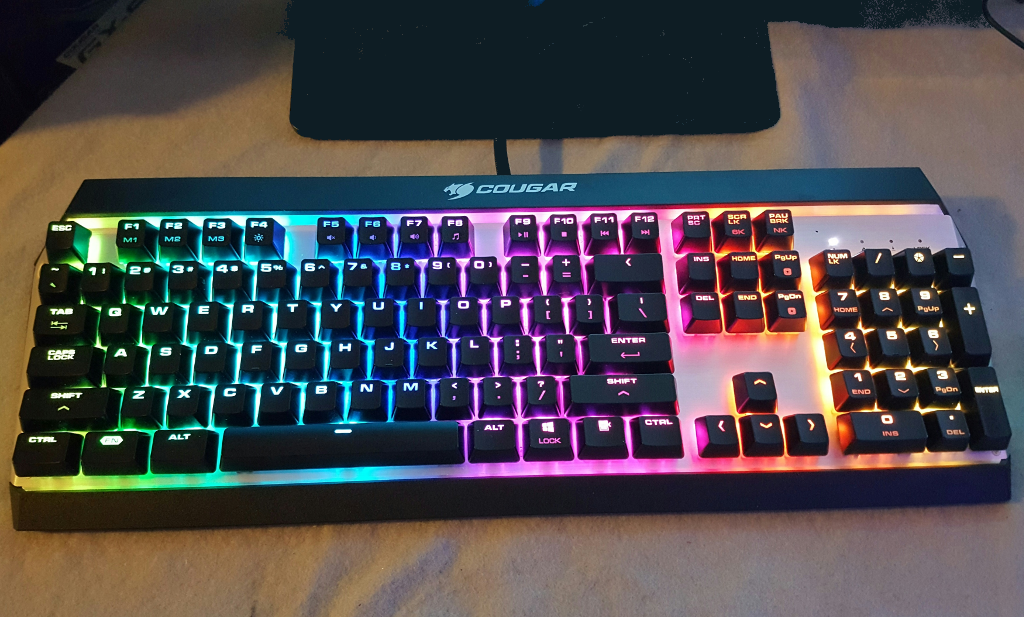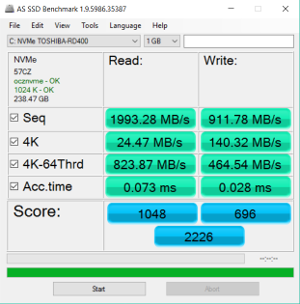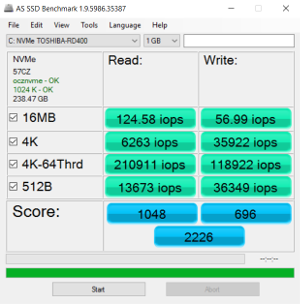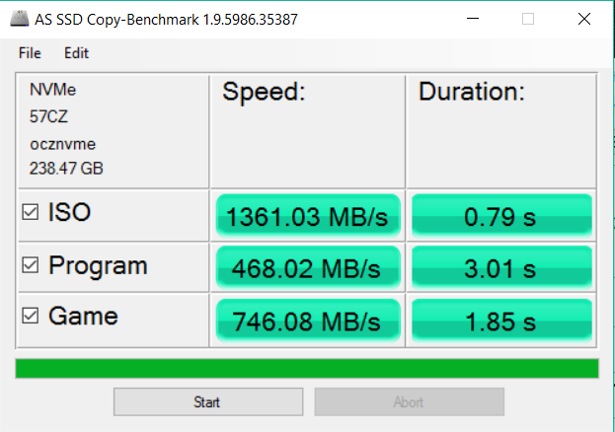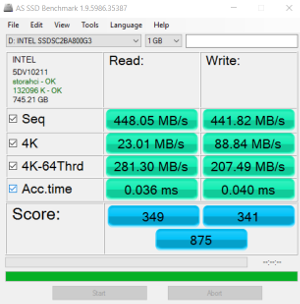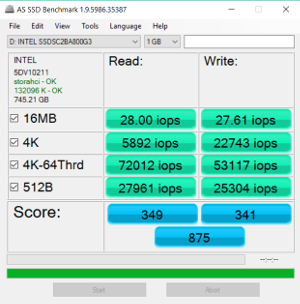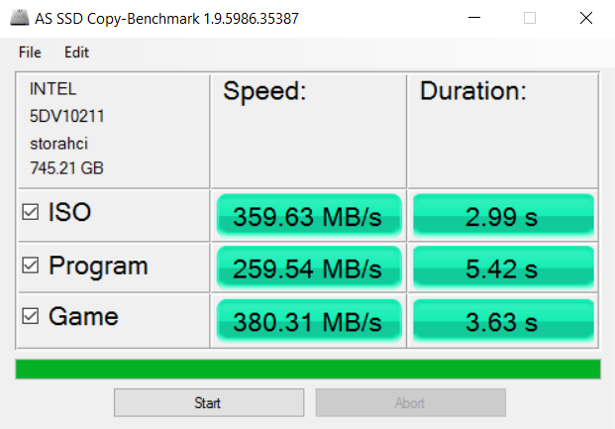OPERATING SYSTEM INSTALLATION AND BENCHMARKS
First we want to boot into the Z170M Extreme 4’s BIOS to check a few settings, including that the storage controller recognizes the RD400 in the Ultra M.2 slot. Now we can shut down and plug in our bootable flash drive with the operating system installation and ISO files on it. We will then power up and enter the BIOS’ boot menu to select booting from the USB flash drive, and we will have operating system installation underway. The image below is a photo of the BIOS main page (after operating system installation).
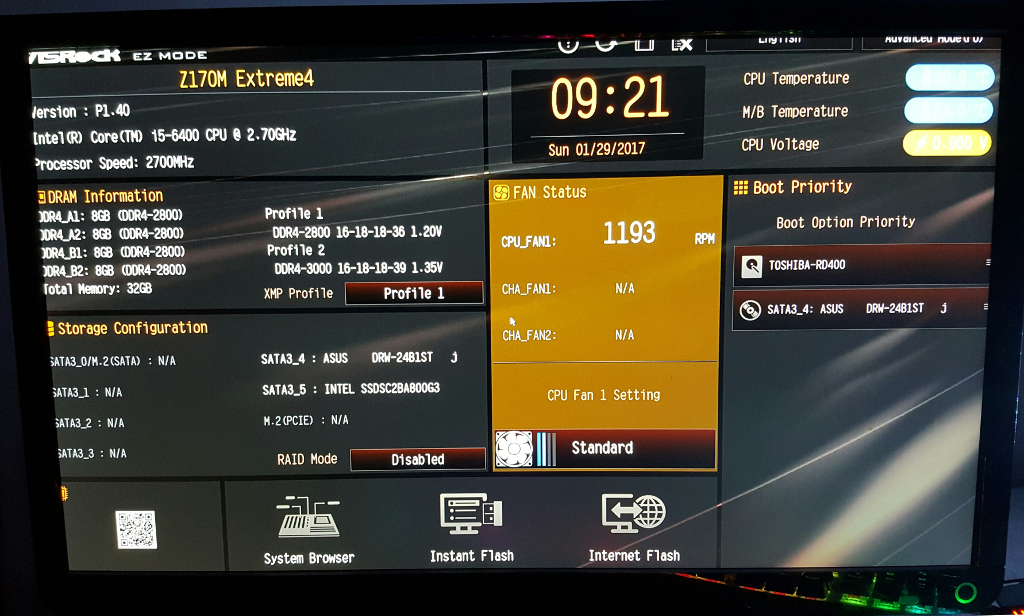 Windows 10 installation went quite smoothly and quickly, and after the usual series of reboots, we had a functional Windows 10 PRO desktop system. We then powered down and connected the SATA data cables for the optical drive and the Intel SSD DC S3700 800GB storage drive. The next screenshot shows the Windows 10 storage page recognizing both the OCZ RD400 and the Intel DC S3700 SSDs.
Windows 10 installation went quite smoothly and quickly, and after the usual series of reboots, we had a functional Windows 10 PRO desktop system. We then powered down and connected the SATA data cables for the optical drive and the Intel SSD DC S3700 800GB storage drive. The next screenshot shows the Windows 10 storage page recognizing both the OCZ RD400 and the Intel DC S3700 SSDs.
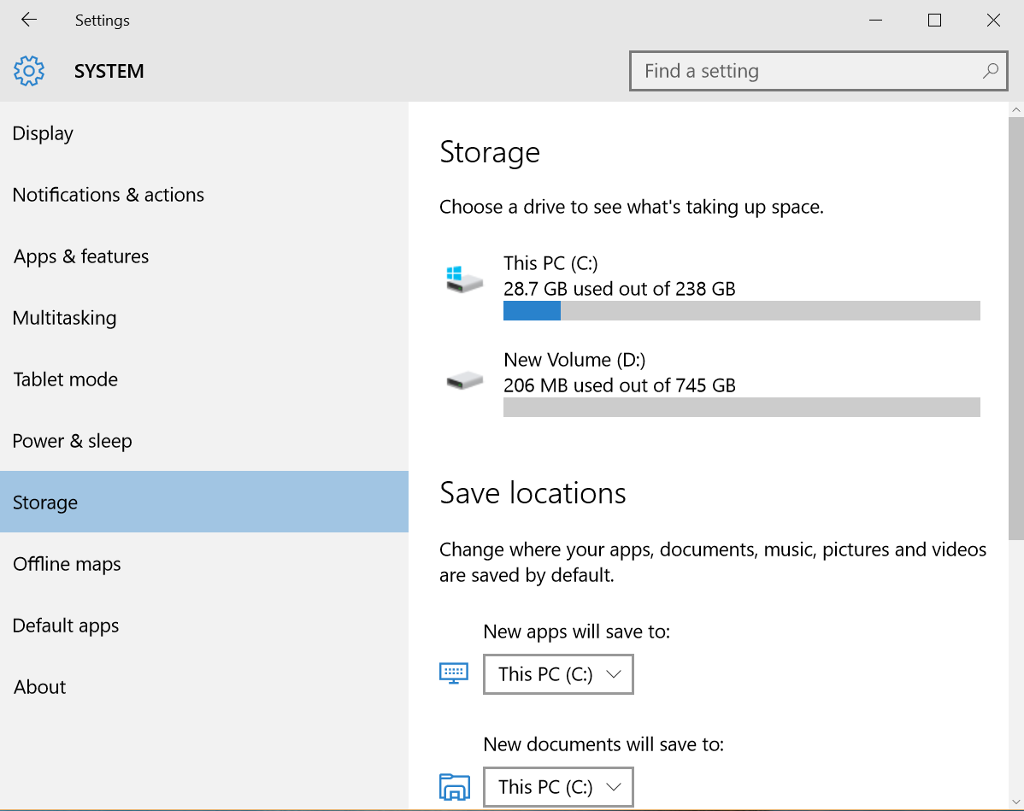 We have updated the RD400 with OCZ’s latest NVMe driver, and we have disabled indexing for both the RD400 and the Intel DC S3700. Now we will run a couple of benchmarks against both of our SSDs to see if they perform as advertised. The next screenshot is the ATTO storage benchmark for the RD400.
We have updated the RD400 with OCZ’s latest NVMe driver, and we have disabled indexing for both the RD400 and the Intel DC S3700. Now we will run a couple of benchmarks against both of our SSDs to see if they perform as advertised. The next screenshot is the ATTO storage benchmark for the RD400.
ATTO DISK BENCHMARK – OCZ RD400
ATTO Disk Benchmark is perhaps one of the oldest benchmarks going and is definitely the main staple for manufacturer performance specifications. ATTO uses RAW or compressible data and, for our benchmarks, we use a set length of 256mb and test both the read and write performance of various transfer sizes ranging from 0.5 to 8192kb. Manufacturers prefer this method of testing as it deals with raw (compressible) data rather than random (includes incompressible data) which, although more realistic, results in lower performance results.
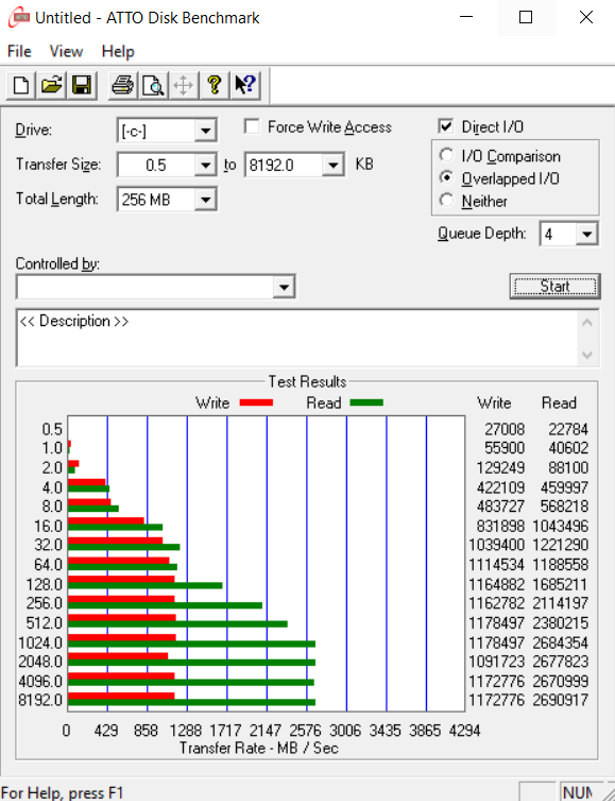 The RD400 surpassed SATA III speeds at transfer sizes as low as 32kb. Top sequential read speed was 2690MB/s, with top sequential write speed of 1178MB/s. Both of these numbers surpass the stated speeds of 2600MB/s reads and 1150MB/s writes.
The RD400 surpassed SATA III speeds at transfer sizes as low as 32kb. Top sequential read speed was 2690MB/s, with top sequential write speed of 1178MB/s. Both of these numbers surpass the stated speeds of 2600MB/s reads and 1150MB/s writes.
AS SSD VERSION 1.9 – – OCZ RD400
The toughest benchmark available for solid state drives is AS SSD as it relies solely on incompressible data samples when testing performance. For the most part, AS SSD tests can be considered the ‘worst case scenario’ in obtaining data transfer speeds and many enthusiasts like AS SSD for their needs. In the screenshots below, transfer speeds are displayed on the left with IOPS results on the right.
The RD400 came up just shy of 2000MB/s sequential reads, with 911MB/s sequential writes. It achieved random read speeds of 211,000 IOPS, and random write speeds of 119,000 IOPS. The overall score of 2226 makes this a top-performing drive.
Above is the screenshot of AS SSD’s copy benchmark, where copy performance is measured in three scenarios — an ISO file, a program file, and loading a game file. All three of the results are impressive, with the ISO file copying in less than 8/10ths of a second!
ATTO DISK BENCHMARK – INTEL DC 3700
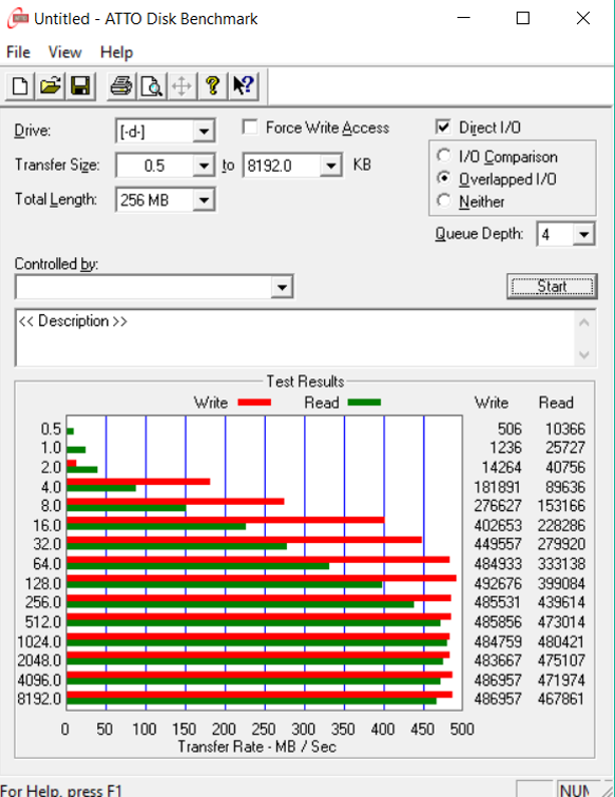 Now it is the Intel SSD DC S3700’s turn. As we see in the ATTO screenshot, the top sequential read speed was 480MB/s, coming up a bit shy of the stated 500MB/s figure. On the sequential writes side, the S3700 bested the stated 460MB/s by attaining over 480MB/s for all queue sizes over 64kb, even hitting 492MB/s.
Now it is the Intel SSD DC S3700’s turn. As we see in the ATTO screenshot, the top sequential read speed was 480MB/s, coming up a bit shy of the stated 500MB/s figure. On the sequential writes side, the S3700 bested the stated 460MB/s by attaining over 480MB/s for all queue sizes over 64kb, even hitting 492MB/s.
AS SSD VERSION 1.9 -INTEL DC 3700
In the AS SSD benchmark, the DC S3700 was a very consistent performer, with 448MB/s sequential reads and 441MB/s sequential writes. Looking at the IOPS screenshot, we see random reads of 72,000 IOPS and random writes of 53,000 IOPS. Looking at the AS SSD copy benchmark, the DC S3700 again was a fairly consistent performer, achieving the ISO file copy in just under 3 seconds.
 Technology X Tomorrow's Technology Today!
Technology X Tomorrow's Technology Today!

